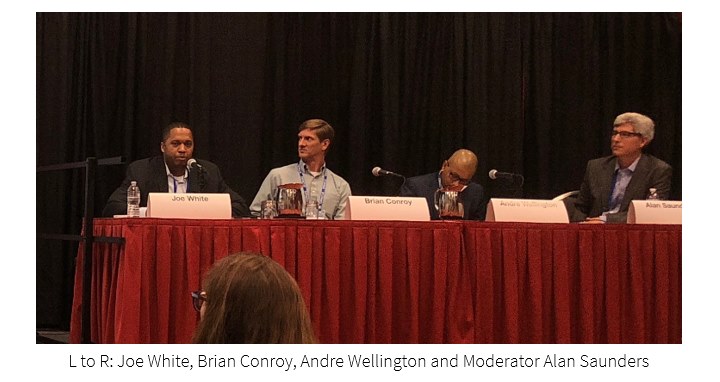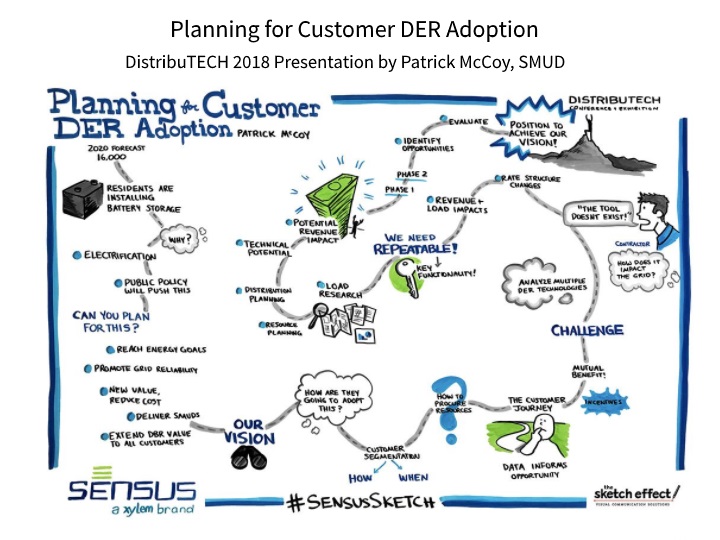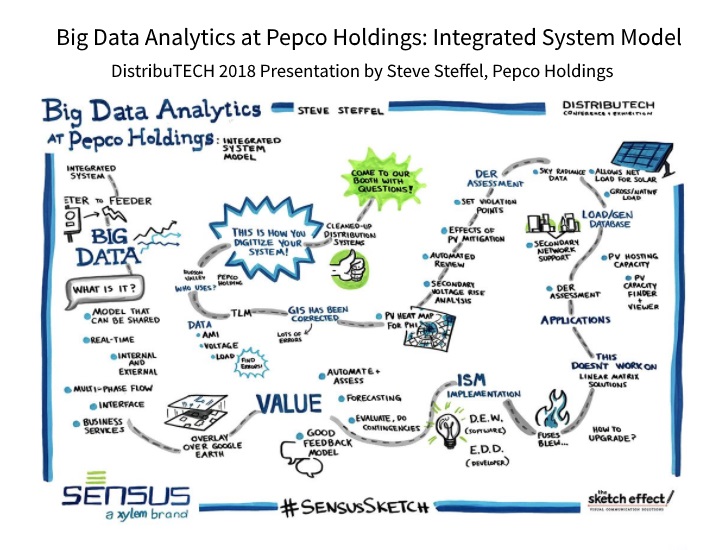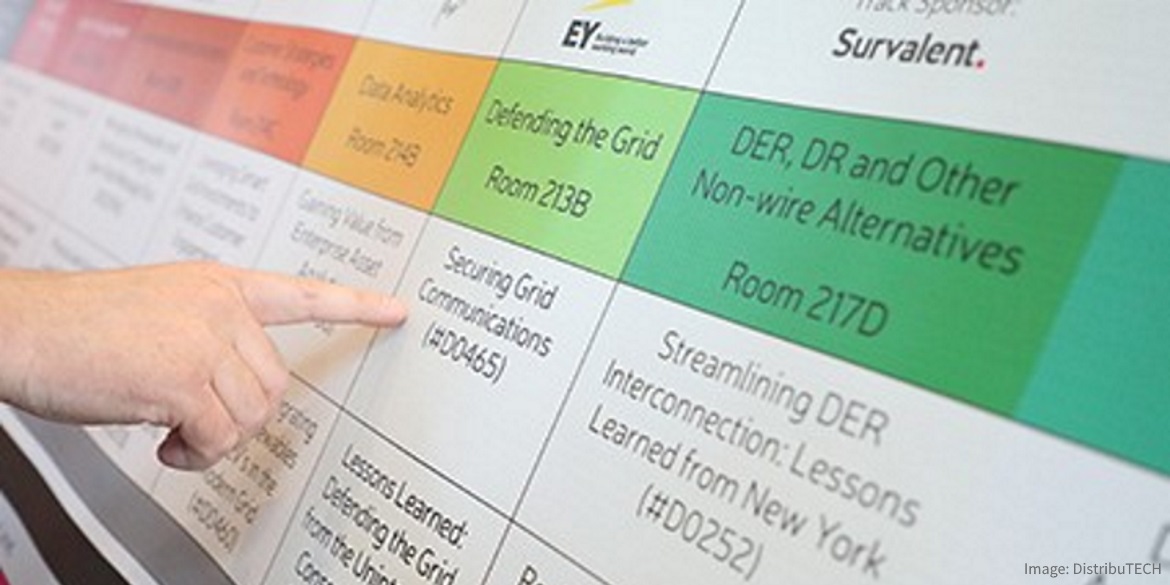The rise of DERMS?
The conference featured healthy debate among utilities and vendors regarding the market readiness of Distributed Energy Resource Management Systems (DERMS.) The opening statement in this debate occurred at a pre-conference session on Monday hosted by the Smart Electric Power Association (SEPA). At this session SEPA unveiled a DERMS Requirements document that has been under development for two years. SEPA and the SEPA Grid Management Working Group are now inviting vendors and other industry players to comment on the document.
The Grid Management Working Group—an industry collaborative consisting of leading utilities including SCE, PG&E, Pepco, AEP, APS, Oncor, Bonneville Power, PSEG, Xcel Energy, SMUD, ComEd, Avista, SDG&E, Southern Company, Entergy, Orange and Rockland (ORU), and Duke Energy—developed the requirements document to help guide the industry in developing and selecting DERMS applications. Their definition of DERMS centers on grid control and the operational technologies needed to manage a more complex grid due to the rapid rise of DERs.
As the conference went on, DERMS continued to be the subject of much discussion. Most utilities seemed to agree that it may be several years before their utility launched a DERMS procurement. In fact, in spite of the admirable efforts of SEPA and the Grid Management Working Group, there is still not consensus among utilities on the full scope of DERMS. In the meantime, however, many will test and pilot systems that meet subsets of DERMS requirements.
Streamlining interconnection screening through integration
At DistribuTECH, several Clean Power Research customers gave presentations related to DER planning and operations.
Joe White from ORU, Andre Wellington from Con Edison, and Brian Conroy from AVANGRID were the featured panelists in the session “Streamlining DER Interconnection – Lessons Learned from New York.”

ORU and Con Edison are both using PowerClerk® today as their Integrated Online Application Portal (IOAP) to meet New York REV requirements. Among other integrations discussed in the session, ORU has built integration between PowerClerk and the Electrical Distribution Design (EDD) DEW/ISM software they use for distribution planning and analysis. In this scenario, PowerClerk manages requests, approvals, roles and communications, and then provides DER specifications to DEW/ISM to automate screens and engineering calculations where appropriate.
Similarly, Brian Conroy described how AVANGRID is working on a NYSERDA funded project that would integrate PowerClerk with software from CYME and Smarter Grid Solutions to create an innovative flexible interconnection capacity system.
The new challenge: Forecasting & DER adoption planning
In another DistribuTECH presentation, “Planning for Customer DER Adoption,” Patrick McCoy from SMUD described how SMUD is collaborating with Clean Power Research to solve the challenges of planning where, when and how the increasing adoption of DERs will impact their distribution systems. For example, which neighborhoods will see the fastest adoption of electric vehicles (EVs)? Does PV adoption correlate to EV adoption? How will adoption rates impact our utility earnings and rate structures?
These are just some of the questions our newest offering, WattPlan® Grid, is being designed to answer. Read more about WattPlan Grid in Utility Dive.
As an added bonus, Patrick’s presentation was captured visually in a sketch sponsored by Sensus that you can see below.

In the same session, Stephen Steffel’s presentation “Big Data Analytics at Pepco Holdings” focused on the additional challenge utilities face in forecasting the energy production of PV systems at various points on their distribution grids. Stephen explained how Pepco Holdings is using SolarAnywhere®, along with distribution planning software from our partner EDD, to forecast PV output and understand the impact of variability on distribution system planning and operations.
In the sketch below, SolarAnywhere’s time-varying PV historical and forecast data (“sky radiance data” in the upper right) is used in the EDD DEW/ISM software to complete the DER assessment study.

Actionable steps
As seen at DistribuTECH, while implementation of a full DERMS system may be several years away for most utilities, Clean Power Research customers are taking steps today to ready themselves for increased DER penetration.
- Collect accurate data on DER interconnections as they happen – PowerClerk allows collection of consistent DER system specifications that utilities can integrate with distribution planning tools to complete the analysis. PowerClerk also houses key data on existing DER adoption as a basis for further adoption modeling.
- Integrate DER adoption forecasts into system planning – WattPlan Grid gives utilities visibility into their customers’ decision processes, providing the input needed for system planning and ratemaking.
- Build PV forecasts into system analysis – SolarAnywhere provides the accurate solar irradiance data needed for utilities to weather adjust planning and operations.
See you at DistribuTECH 2019 in New Orleans!
It’s not too early to start thinking about the projects and presentations for DistribuTECH 2019. Call for Papers will go out in May 2018. Contact us if you have ideas for collaboration!
Interested in learning more about automating the interconnection screening process? Read our whitepaper: “Resolving the Conflict Between Distribution Planning and Interconnection Processes.”
